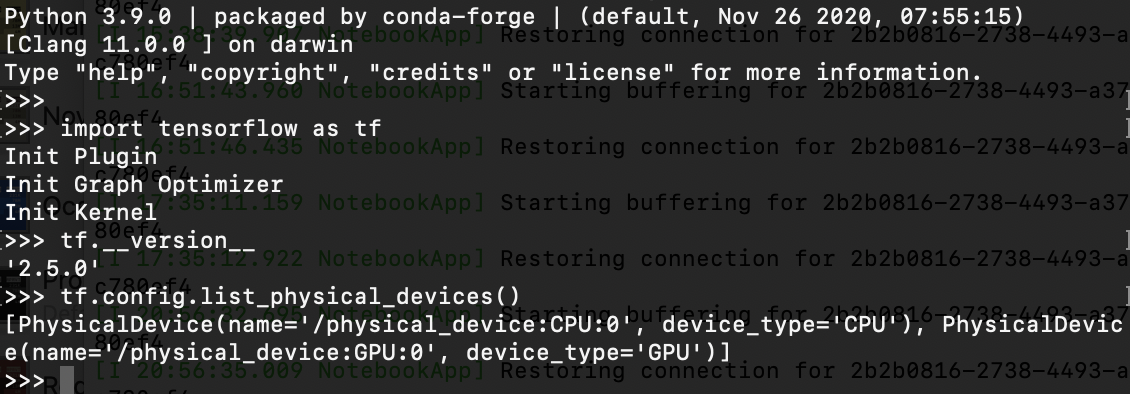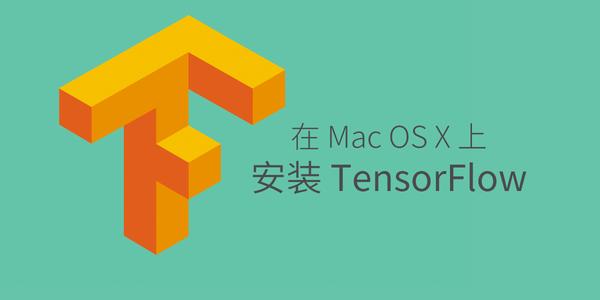
- #Tensorflow mac os docker how to
- #Tensorflow mac os docker install
- #Tensorflow mac os docker code
- #Tensorflow mac os docker password
The command ‘/bin/sh -c /home/opencv.Creative Applications of Deep Learning w/ Tensorflow Step 5/12 : ADD opencv.sh /home/opencv.sh The command ‘/bin/sh -c /home/opencv.sh’ returned a non-zero code: 2ģ. Make: *** No rule to make target ‘install’. : not foundv.sh: 8: /home/opencv.sh: make Specify –help for usage, or press the help button on the CMake GUI. ” does not exist.source directory “/tf/build Mv: cannot stat ‘3.4.9’: No such file or directory debconf: delaying package configuration, since apt-utils is not installedĢ. Is there common source of where all are learning Hope I could refer that too. For long time when logs were being printed with errors and finally not able to get the image created. I got impressed and follow all the steps like religious book.
#Tensorflow mac os docker how to
After lot of struggle found your website where you talked about how to create your own stuff.
#Tensorflow mac os docker password
Most of docker images available in docker hub are copied from each other, because no one talked about how to make jupyter notebooks run, as it was asking password for all.


Run these cells consecutively and you’ll see the result of object detection (like the following in my case): The last cell is responsible for displaying the result of Object Detection: import matplotlib.pyplot as plt Out = n([_tensor_by_name('num_detections:0'), With tf.gfile.FastGFile('ssd_mobilenet_v2_coco_2018_03_29/frozen_inference_graph.pb', 'rb') as f:
#Tensorflow mac os docker code
The next cell is the sample code from the OpenCV Object Detection example (slightly changed since we can’t use cv.imshow in a Jupyter Notebook: import numpy as np Obviously you need to replace “” with a real URL to a “test.jpg” file you want to test with Object Detection. The first cell is responsible for downloading all the necessary files: !wget "" So, let’s create a Jupyter Notebook and create the following cells in it. If you’re not familiar with Jupyter Notebooks then it might feel a bit strange at first but as soon as you get used to it, life seems impossible without it. As a great starting point, let’s use the example from this page to use TensorFlow pretrained models in OpenCV:

Not all the folders seen here will be available on your Jupyter server. Now you can start experimenting with TensorFlow and OpenCV. This should take you to the local Jupyter server running in the background using Docker. This will output some text into the Terminal/Command Prompt/PowerShell which will contain a URL similar to the following: Ĭopy and paste it into your browser. Let’s run the image we just created, using the following command: docker run -p 8888:8888 computervision It’s worth noting that the image we build contains the following main compnents: This will take a long time (depending on your internet speed and computer specs) but eventually you’ll have a Docker image that you can run. Now run the following command from inside the “computervision” folder: docker build -tag computervision. The next file we need is called “opencv.sh” which will contain the following: cd / Python object_detection/builders/model_builder_test.py bin/protoc object_detection/protos/*.proto -python_out=.Įxport PYTHONPATH=$PYTHONPATH:`pwd`:`pwd`/slim

Next, create a file named “tfmodels.sh” in the same folder and paste the following code in it: cd /tf/
#Tensorflow mac os docker install
RUN apt-get install git cmake wget unzip -y Paste the following code into “Dockerfile”: FROM tensorflow/tensorflow:1.15.2-p圓-jupyter Then create a folder called “computervision” and then create a file named “Dockerfile” in that folder. Then come back to this tutorial to learn how to create a Computer Vision Docker Image that you can use to develop and play around with TensorFlow and OpenCV for Object Detection.įirst things first, make sure you have Docker installed on your machine. If you’re not familiar with the topic then I suggest first doing some research and reading on “Containerization vs Virtualization” and how to use Docker. They make life extremely easy by guaranteeing that your application (in this case, Computer Vision application) will always behave the same way as it did when you developed it. It’s almost inevitable to use Docker images these days especially if you want to have a consistent development environment and configuration.


 0 kommentar(er)
0 kommentar(er)
